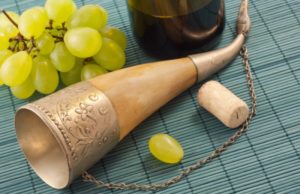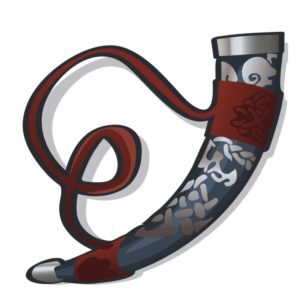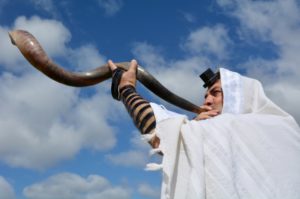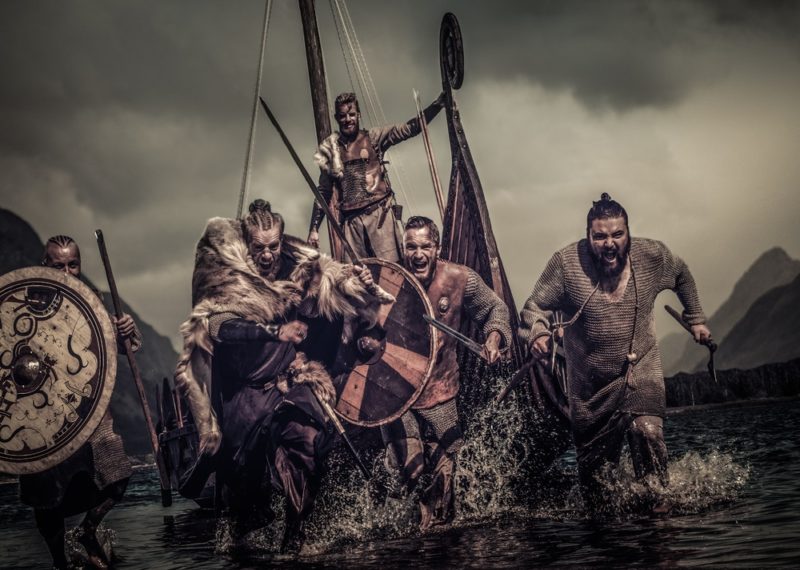The Vikings used their navigational talents to travel the world. When they arrived in new territory, they weren’t the most polite of visitors, leaving many people to live their remaining years in fear of the people from the north returning. This was one way the Norse’s reputation as ruthless warriors was maintained over time. However, this wasn’t the only way the Viking nation made it into the history books.
The Vikings were known for being tradesmen, which is one of the reasons why Viking tools, weapons, and other goods have been well preserved. Because Vikings were seafaring people who traveled the seas, their culture and instruments spread to several nations. One such asset was the Viking horn.
Understanding the Viking Drinking Horn
Viking horns were used as drinking vessels and as musical instruments. You may have seen Viking drinking horns in popular Viking movies and television series, but you may not have known that the practice of using a drinking horn is still widely accepted today. The tradition of drinking from a horn is more than 2,000 years old and began in the Viking age.
The Viking drinking horn, also known by the Norse as a mead horn, was made from the horns of bovid animals. Traditionally, the shape of the cow horn was maintained, which meant that the drinking horn had a narrow end. This made it impossible to put down the way you set a cup down while slowly sipping your drink.
A Viking drinking horn had a narrow end that ended in a closed tip and a rim used for sipping a drink. They often had a C-shape, although some horns had a curvy shape. Often, Vikings would adorn their drinking horn with silver or gold.
An Essential Component of Viking Feasts
The drinking horn was an essential part of every Viking feast. Several horns were exquisitely carved and embellished with a silver or gold end or rim. Horns frequently appear in the sagas and were often depicted in their artistry. A Valkyrie is frequently pictured giving a horn to a heroic Viking warrior or Odin himself. These drinking horns were most likely used during major gatherings and ceremonial rituals.
In the Viking age, drinking horns were used primarily for drinking alcohol, such as beer and wine, so you didn’t put your horn down until you had finished your drink. The objective of the Viking drinking horn was for it to be emptied, regardless of whether it was full of beer, wine, water, or mead.

Vikings Used Every Part of the Animal
When people were starving, and food was hard to come by, every component of the creature had to be utilized for fear of not knowing when the next expedition would result in a meal. Animal meat was meant to be eaten, so it was dried and kept as best as possible.
Hides and skeletons were used to manufacture and mend tents and clothes. They were also used for making bags, water pouches, and blankets and were even used to make accessories such as necklaces. Bones were also used to close cart structures and were even used in the construction of walls.

Playing the Viking Horn Like a Brass Instrument
Viking horns weren’t just used as drinking vessels for beer, wine, and mead. While this was their primary function, some Norse folk used the horns of rams or goats to form what was known as a bukke horn in Norway.
First Used by Shepherds and Milkmaids
It was historically used as a signaling or spooking device by milkmaids and shepherds in the mountains and dairy farms. The instrument is usually played by blowing on the end or buzzing your lips against a mouthpiece, although there are variations with a single reed comparable to a clarinet.
Form
They were also used as musical instruments the same way that brass instruments like trumpets are played today, producing a low sound when you blow into them. The narrow end of the horn formed the mouthpiece of the instrument. Viking horns are widely available today, so you can produce wonderful music and develop a skill that was common in the Viking age with a little practice.
Frequently Asked Questions
1. Why Were Animal Horns Used to Make Drinking Horns?
You may be wondering why the Vikings used animal horns as drinking horns. Years before table manners were introduced, folks were undoubtedly having drinking contests, so emptying your glass in one big chug was a relatively typical event, especially among Dionysus followers. The history of the drinking horn is actually rather fascinating.
Food Was Hard to Come By
The world was a tough place in the days before recorded literature. When it came to food, the Norse did all they could to find enough food to fill their stomachs. Unlike today, where people can use services like Apple Pay Diners Club and Venmo Visa to buy food online, people in the age of the Vikings had to hunt for food.
Showing Their Respect for Nature
Several nations throughout history believed in utilizing every component of an animal they used for food. This was in order to show respect for that animal and, by extension, for nature itself. You may not have known this, but this is an old tradition that, like alcohol, dates back much longer than anyone can recall.
2. How Do You Play the Viking Horn?
To play a horn, all you need to do is tighten your lips as if you are going to say the letter M and practice making a buzzing sound. Next, hold the end of the horn or the mouthpiece against the center of your mouth and blow to produce a deep sound.
There are many high-quality Viking horns available online, and you can find videos on YouTube to learn how to play this musical instrument. There are also variations that have mouthpieces to produce louder sounds.
3. What Were the Cultural Implications of the Viking Drinking Horn?
Drinking horns were not the prized possessions of kings, and they weren’t used during the burial of warriors, either. Drinking horns were merely vessels to be used for drinking. However, as the Norse folk’s traditions became more vibrant, the mystery surrounding mead and the drinking horns that contained it grew stronger.
Family Heirlooms
It was not uncommon to pass down their drinking horns to the next generation. As these drinking horns were passed down through the ages, they were sometimes embellished with ornaments and intricate carvings, adding to the mysticism and worth of the drinking horn.
Served by Women
As mentioned before, Viking drinking horns were not traditionally used in the ceremonial burial of heroic warriors. According to historical records, most of the historic drinking horns discovered in Norse graves were discovered in the hands of women and not men.
This is thought to be because women were the carriers of mead, and while it may appear submissive to us now, women were the ones who handled the mead horns since they were the people who distributed the nectar.
Final Thoughts
The Viking horn came to be known as the drinking vessel of the Norse people. However, they were not the first nation to make use of a cow horn as a drinking horn. The Greek and Scandanavian people were thought to be the first to use the drinking horn.
Even so, the Viking drinking horn formed essential accessories at a feast and was commonly used in drinking contests. The horns of goats and rams were also used to scare away predators in dairy farms and mountains, but today are enjoyed as musical instruments.
Today, you can purchase drinking horns to host your own Viking feast or hold a musical horn against your mouth to enjoy notes that the Norse enjoyed in their day.




